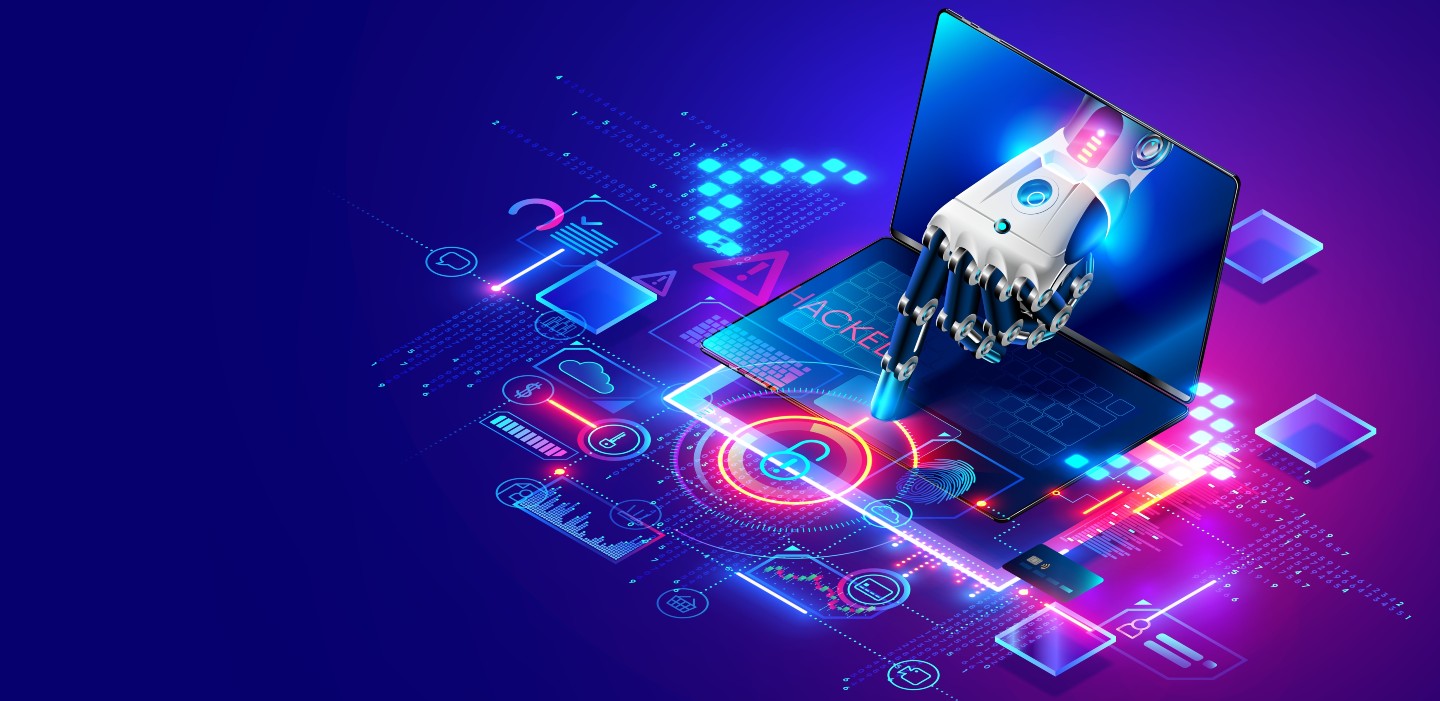Cyber attacks become more menacing and sophisticated with every passing day. Enterprising cybercriminals leverage the latest technologies, including AI, to take down any network. Even governments and Fortune 500 companies have fallen to such assaults.
Cyber attackers have always been resourceful. They now use Artificial intelligence (AI) to upgrade their cyber weaponry in a big way. AI’s ability to learn and adapt makes it a deadly and even life-threatening tool in the hands of cybercriminals. “Offensive AI,” or malicious attack code, mutates and compromises systems, leaving no room for detection. Cybercriminals have also deployed AI for launching tailored attacks at scale. The dark web offers AI-based malware in “as-a-service” mode.
AI makes existing threats more potent and deadly, and also introduces new threats. Several high–profile attacks in recent years offer a portent of things to come.
- The 2017 WannaCry ransomware attack hit enterprises in 150+ countries. The malware moved through enterprise networks in seconds, paralysing hard drives on its path. Innovative attacks leverage AI to infiltrate networks by stealth and use the host’s processing power to mine bitcoins.
- The Emotel Trojan spreads through an invoice phishing scam. The malware leverages AI’s ability to analyse the context of the email threads and replicate natural language. The invoices look genuine to a normal user. It also inserts itself into pre-existing email threads and spreads itself that way.
- Several banking Trojans masquerade as genuine applications and steal financial data.
- Deep learning makes deep fake videos possible. Deep learning based malware manipulates real video and natural voice. For instance, a 2018 research trawl unearthed 14,698 deep fake online videos.
These attacks represent the start of the new-gen sophisticated attacks. AI-powered attacks get more and more deadly with every incident and will make matters much, much worse.
Fight fire with fire.
Traditional cyber defences have become against sophisticated AI-powered attacks. As AI becomes part of the cyber attacker’s toolkit, the only way to combat it is through AI itself.
Incorporating Artificial Intelligence into the business ecosystem is crucial to thwart sophisticated cyber attacks. Cybercriminals succeed because they are relentless. If they fail, they do not give up. They change their methods and keep on coming. In contrast, cyber defence often shows fatigue, especially after thwarting an attack. Human errors play a big role in triggering attack episodes. AI takes human errors, fatigue, and burnout out of the equation. AI-powered cyber defence defends the network with equal alacrity and tenacity.
AI Strengthens Defensive Cyber Deployment
Traditional security approaches have static thresholds. Cyber attacks often game the system by flying under the radar of such static thresholds.
Cyber security uses AI to strengthen traditional deployments. Rules become more dynamic, so attackers can no longer use stealth. The common areas of application include:
- Thwarting DNS manipulation. Cybercriminals often manipulate DNS data to evade firewalls. Usually, DNS data has different rules compared to ordinary traffic, so firewalls allow DNS data to pass. Machine Learning AI analyses trillions of DNS queries to unearth the covert activities of bad actors and block such DNS traffic.
- Authenticity protection. Using AI for facial or fingerprint recognition makes access-control more secure. Hackers find it very difficult to impersonate users and take over their accounts.
- Elastic alerts. A traditional security information and event management (SIEM) system raises an alert on failed logins. Ill-configured thresholds cause alert fatigue and laxity in responding to alerts. Thus, a brute-force attacker can perform several failed attempts and remain unidentified. AI-powered systems set elastic thresholds with minimal human intervention. AI monitors login patterns and sets thresholds depending on variables, such as the date and time of the week and other relevant details. For example, a login attempt at 3 AM could trigger an immediate alert even with a one time failed attempt. In contrast, the system may trigger an alert only after ten failed login attempts on a Monday morning. The system also identifies rare patterns unseen manually or with traditional systems.
- Better endpoint protection. Deploying AI at endpoints identifies and quarantines malicious websites. SIEM products with AI-based User and Entity Behaviour Analysis (UEBA) tools secure critical systems. UEBA tools monitor users and entities at a much deeper level compared to conventional tools.
Proactive AI through Network Monitoring
Monitoring cyberthreats manually or through first-generation tools no longer suffice.
Traditional network security approaches have limitations. Conventional rule-based systems need complex rules updated over time. Even then, such systems cannot catch zero-day exploits.
AI-based malware blends into the background to evade cyber defence deployments. Such malware maintains a long-term presence to learn and adapt to the target environments. AI algorithms get better over time, and the same holds for malware algorithms. The malware uses the most dominant communication channels and protocols to blend with the routine. When they finally attack, they move fast. Such malware blends into the user’s native context. As such, it becomes impossible for traditional security controls to detect and stop these attacks.
Using AI allows cyber security to automate network monitoring and cyber defence capabilities.
The AI engine processes massive sets of data. AI-based systems understand the pattern of the website traffic. It identifies various types of traffic, such as search engine crawlers, bad bots, genuine human users, and rogue insiders. The network monitoring tool uses such insights to detect trends, calculate risks, and trigger instant action.
- AI-powered UEBA tools analyse baseline behaviour. The tool identifies abnormal behaviour that might signal a zero-day attack.
- Deep learning capabilities enhance the quantity and accuracy of the data. The algorithms become more robust as each sample of malware passes through the model.
Surfacing anomalies
Enterprises already have their hands full with insider threats. Now, AI-based cyber attacks impersonate trusted users. AI-powered malware analyses email and social media to decipher user behaviour and language. They leverage such knowledge to impersonate the user to perfection. The malware could, for instance, replicate a user’s writing style and draft messages that fool most recipients and spam filters.
AI-powered deep learning identifies and tracks patterns in data to detect anomalies. The model unearths suspicious patterns indicating the malware operating by stealth. Examples include repeated emails from a single source and emails with hidden content.
Incorporating AI into the digital ecosystem
In Industry 4.0, enterprises move into a connected digital ecosystem. The survival of most enterprises depends on partnerships and being a part of an ecosystem. Central to such teamwork is the fight against cybercriminals. Maintaining the integrity of the network is essential for safeguarding the data and confidence in digital systems.
Deploying AI to ward off cyber-attacks is costly. But most enterprises have no option, considering the stakes involved. Security and privacy represent the trustworthiness of a business. Any compromise may sound the company’s death knell. Deployed the right way, AI is a vital ally for cyber defence in the eternal digital battlefield against cyber criminals. A 2019 Cisco study estimates that AI-based tools identify up to 95% of threats faced by an organisation. Human experts oversee the AI’s decision-making and undertake remedial work.












